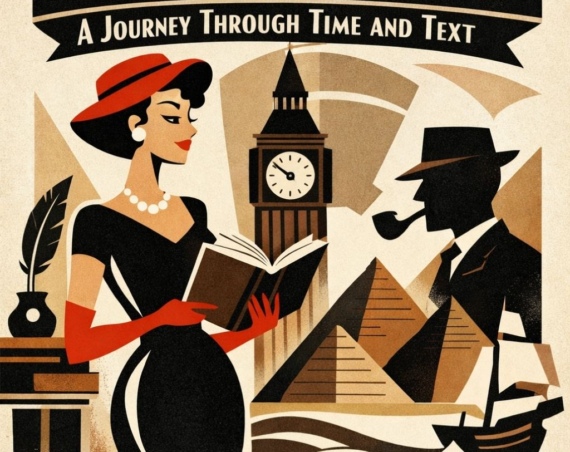Have you ever wondered what it would be like to see the world through the eyes of a madman, a dreamer, or a visionary? Have you ever felt that reality is too dull, too rational, too predictable to capture the essence of human experience? If so, you might be interested in expressionism, a literary movement that seeks to represent emotional experience rather than physical reality.
What is expressionism in fiction?
Expressionism in fiction emerged in the early 20th century, mainly in Germany, as a reaction against the materialism, complacency, and mechanization of modern society. Expressionist writers wanted to explore the inner turmoil of their characters, their alienation from the world, and their quest for spiritual meaning. They used various techniques to achieve this goal, such as distortion, exaggeration, symbolism, fantasy, and stream of consciousness.
Who are some of the most famous expressionist writers?
Some of the most famous expressionist writers are:
- Franz Kafka, who wrote surreal and nightmarish stories about individuals trapped in absurd and oppressive situations, such as The Trial and The Metamorphosis.
- James Joyce, who used stream of consciousness to depict the thoughts and feelings of his characters in a complex and lyrical way, such as in Ulysses and A Portrait of the Artist as a Young Man.
- Edvard Munch, who painted expressionist masterpieces such as The Scream and The Dance of Life, which influenced many expressionist writers with their vivid colors and distorted forms.
Is expressionism in fiction still relevant today?
Expressionism in fiction is not only a historical phenomenon, but also a timeless one. Many contemporary writers still use expressionist techniques to create powerful and original works of art. Some examples are:
- Haruki Murakami, who blends realism and fantasy to create surreal and whimsical stories that explore themes such as loneliness, identity, and love, such as The Wind-Up Bird Chronicle and Kafka on the Shore.
- Toni Morrison, who uses poetic language and symbolism to portray the lives and struggles of African Americans, especially women, in novels such as Beloved and The Bluest Eye.
- Salman Rushdie, who mixes history and mythology to create satirical and magical stories that challenge political and religious dogmas, such as Midnight’s Children and The Satanic Verses.
Why should you read expressionist fiction?
If you are looking for a way to escape from the mundane and the conventional, expressionism in fiction might be the perfect choice for you. It will take you on a journey into the depths of the human psyche, where you will encounter beauty and horror, joy and despair, madness and wisdom. It will challenge you to question your assumptions about reality and yourself. It will inspire you to express your own emotions and visions in new and creative ways.
What is the difference between expressionism and surrealism?
Expressionism and surrealism are two different artistic styles and movements that emerged in the early 20th century. The main difference between them is that expressionism aims to express the artist’s emotions or inner feelings, while surrealism seeks to explore the subconscious mind and its connection to reality1.
Expressionism uses bold colors and distorted forms to convey the intensity and drama of the artist’s subjective experience, often in response to social or political issues. Expressionism is more realistic and traditional than surrealism, and is often associated with German artists such as Max Beckmann, Ernst Ludwig Kirchner, and Emil Nolde2.
Surrealism uses unexpected, bizarre, and seemingly nonsensical images and symbols to create works of art that challenge the rational and logical perception of reality. Surrealism is more abstract and experimental than expressionism, and is often based on the techniques of automatic writing and free association. Surrealism is more commonly associated with French artists such as Salvador Dali, Joan Miró, and René Magritte2.
What are characteristics of expressionist fictions?
xpressionist fiction is a literary movement that seeks to represent emotional experience rather than physical reality. It is often considered a revolt against realism and naturalism, seeking to achieve a psychological or spiritual reality rather than record external events in logical sequence1. Some of the characteristics of expressionist fiction are:
- It uses distortion, exaggeration, symbolism, fantasy, and stream of consciousness to convey the intensity and drama of the writer’s subjective experience, often in response to social or political issues.
- It explores the inner turmoil, alienation, and quest for meaning of the characters, who are usually symbolic types rather than fully developed individuals.
- It employs a concentrated, elliptical, and telegrammatic language that expresses the spiritual malaise, revolt, and hope of the characters in long monologues or loosely linked tableaux2.
- It depicts the horror and apocalyptic visions of the collapse of civilization, as well as the beauty and joy of the human psyche.
- It challenges the rational and logical perception of reality, and questions the assumptions and values of the modern society.
- It inspires the reader to express their own emotions and visions in new and creative ways4.




